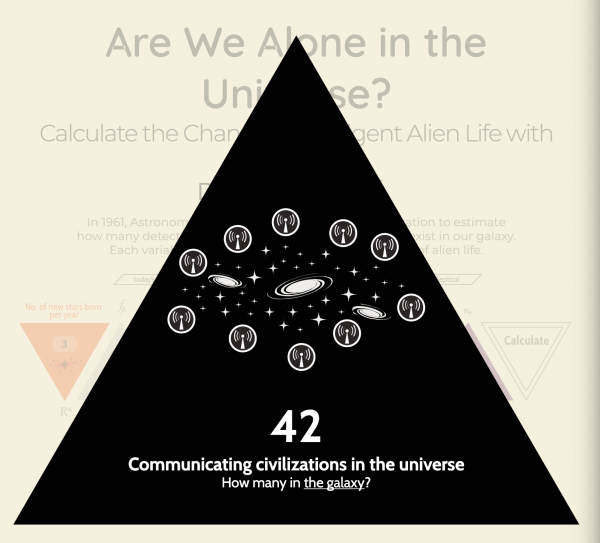Information Is Beautiful has an interactive data visualization to help you decide if we're alone in the universe.
As usual, for them, it is well done, fun, and informative.
For the slightly geeky amongst us, the model lets you adjust the estimate by playing with two equations: the Drake equation and the Seager equation.
The Drake equation estimates how many detectable extraterrestrial civilizations exist in our galaxy and then in the Universe based on factors like habitable planets, change of life, and then intelligent life, and then the amount of time a civilization sends signals into space.
The Seager equation is a modern take on the equation focusing on bio-signatures of life that we can currently detect – for example, the number of observable stars/planets, what % have life, and then % chance of detectable bio-signature gas.
For both equations, Information Is Beautiful lets you look at various default options but also playing with your own numbers to do the math.
For example, the skeptic default answer for Drake's equation shows 0.0000062 communicating civilizations in our galaxy and which is still 924,000 in the universe. The equivalent for Seager's equation shows 0.0009000 planets with detectable life in our "galactic neighborhood" and 135,000,000 planets in our universe.
Even with the "lowest possible" selection chosen, Drake's equation still shows 42 communicating civilizations (Douglas Adams, anyone?) in the universe.
One of the most interesting numbers (and potentially influential numbers for me) is the length of time a civilization sends signals into space. Conservative numbers are 420 years, but optimistic numbers are 10,000+.
If any aliens are reading this … don't worry, I won't tell. But, we will find out if you voted in the last election.

 via
via  via
via
Leave a Reply